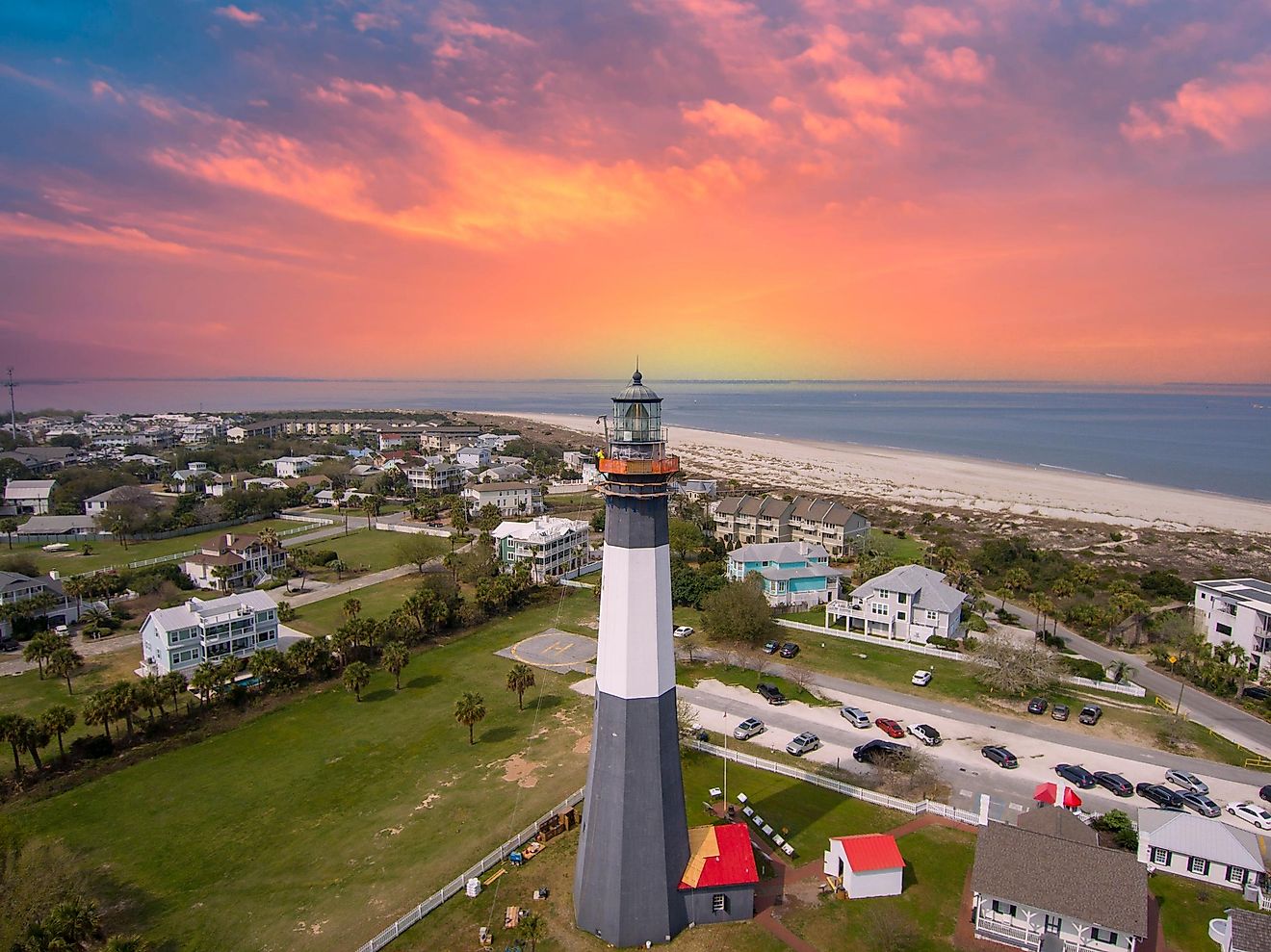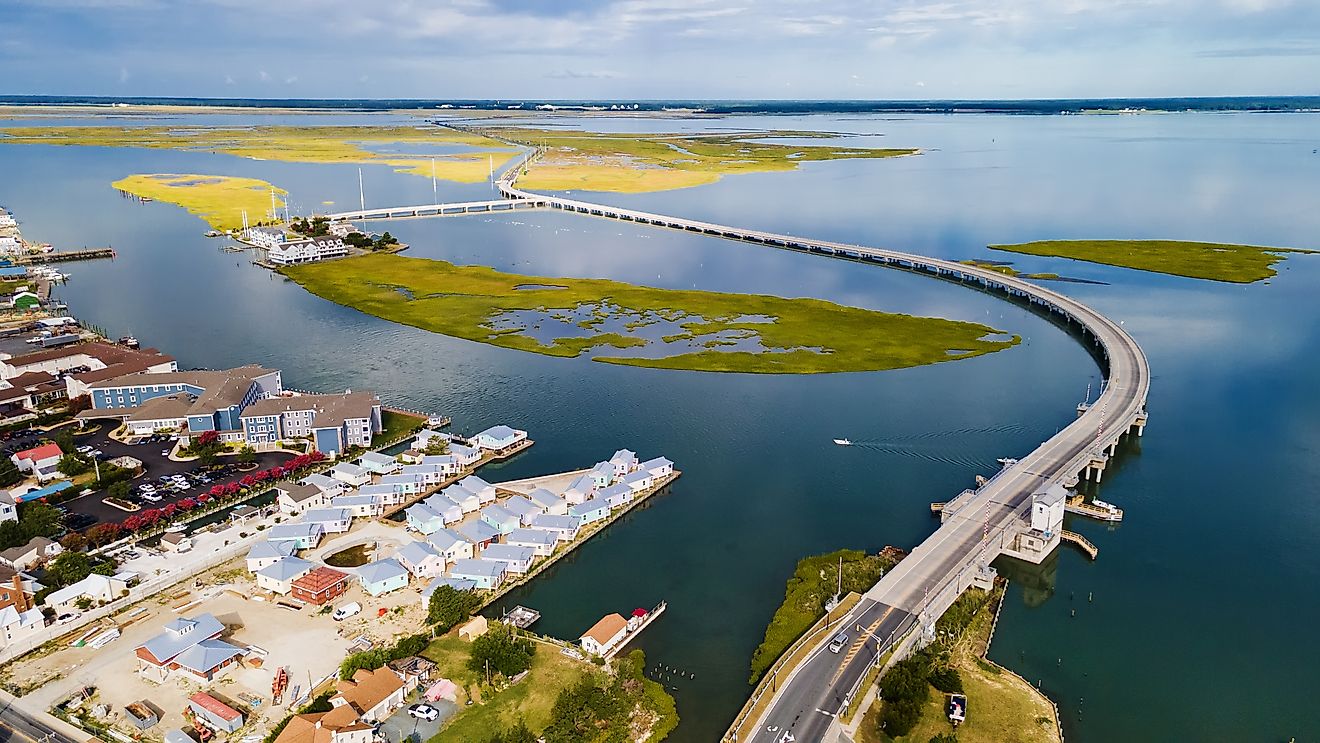
10 Most Beautiful Historic Towns in Alabama
The state of Alabama has a truly admirable historic allure. It is home to a sizable part of America's glorious past and some of the oldest towns in the United States. This state’s history dates back thousands of years ago, when Indigenous people inhabited the area. From the 16th century to the 18th century, the area changed from being a Spanish territory to becoming part of the British Empire. After the American Revolutionary War which lasted from 1775 to 1783, the area became part of the United States, and Alabama became recognized as a state in 1819. Today, a huge part of this state’s rich history can be seen in the many small towns scattered across its territory. From Mooresville to Moundville, here are the top historic towns in Alabama worth exploring.
Fort Payne

Fort Payne has an extensive past, including being formerly renowned as the socks capital of the world. Another piece of history from Fort Payne's past is centered around the Trail of Tears, which is the name given to the forced exile of the Native American population. In 1838, the Cherokee people native to the area were rounded up and evacuated in stockades to Oklahoma. The town was eventually named after Old Fort Payne, which was one of the log stockades erected in the area during the forced removal of the natives. Today, the stockades are all gone, although the town still hosts historic sites like a chimney of Fort Payne in the downtown area and the Fort Payne Depot Museum, which is a great place to learn more about the town's history and see exhibits of its past. Other interesting attractions in town worth checking out include the Fort Payne Opera House, which was built during the industrial boom.
Columbia

Columbia is one of the oldest continuously operating towns in southeast Alabama, renowned for its status as a bustling port-of-call town for steamboats. This town was founded in 1820 and has plenty of history to offer across its century-old homes, churches, and prehistoric structures. The Columbia Methodist Episcopal Church, established in 1832, is one such historic church and landmark alongside the Columbia Baptist Church. Columbia Old Jail is another attraction reflective of how far this town has come. This jail was built in the 1860s, and it stands as one of the few surviving wooden jails in Alabama. In addition, Columbia hosts the 19th-century Purcell-Killingsworth House, which was the childhood home of Clare Purcell - the Bishop of the Methodist Church from Alabama.
Moundville

Moundville is home to one particularly powerful historic site known as the Moundville Archaeological Park, one of America's most iconic Native American Heritage landmarks. The park covers an area of about 326 acres, where native Mississippian people constructed 29 earthen mounds to form a complex of mounds, hence the naming of the town. Visitors can roam this massive archaeological site to visit these mounds or learn more about them at the Park's Museum. The park also features a half-mile natural trail for hikes with scenic views of the Black Warrior River and picnic areas to relax. Visitors to the park can also check out the Jones Archaeological Museum, which is home to over 200 ancient artifacts that reveal more about the surrounding archaeological sites.
Tallassee

Tallassee is an old town settled in 1835 that has a history involving active participation in the Creek War and the American Civil War. During the Civil War, this town sent soldiers to fight against the Union forces and also had a significant role in the Battles of the Armory. Today, Tallassee is home to the Tallassee Confederate Armory, which stands as the only surviving armory of its kind from the Civil War era. Outside of war history, Tallassee also is home to the Benjamin Fitzpatrick Bridge - a historic landmark over the Tallapoosa River and one of the world's longest curved bridges. Visitors can also learn more about the town at Tallassee Falls Museum, which features twelve exhibits, each of which preserves a part of the area’s history.
Athens

Located in Limestone County, Athens is one of the oldest incorporated towns in Alabama, founded in 1818. Hence, it is full of history, with four historic districts where nearly all homes date back to the 1800s. Visitors are welcome to individually explore these historic districts and also check out the Alabama Veterans Museum & Archives to catch a glimpse into the lives, times, and testimonies of veterans, with an impressive display of artifacts. Other notable historic sites to explore in Athens include Donnell House, which was completed around 1851, and Fort Henderson Site, where a Civil War fort still stands. In addition, visitors can check out the Athens Courthouse Square, where history, shopping, food, and music combine to make it attractive and vibrant.
Tuscumbia

Tuscumbia has a long history as it was incorporated in 1820 and originally called "Occocopoosa." While its rich history will take a while to savor, visitors can peek at what the town looked like in the 19th century at the Tuscumbia Historic District. This district offers a walking tour and is home to more than 20 antebellum structures that are listed on the National Register of Historic Places. Its residential buildings are a mix of prehistoric architecture ranging from Tudor and Revival to Victorian and Gothic. Remarkable buildings in the area include the Colbert County Courthouse, Commerical Row, and St John's Episcopal Church. The town is also home to the Alabama Music Hall of Fame, which honors musical icons across the state.
Selma

Selma is a beautiful town rich in African-American history, with 80% of its population being African American. The town etched its name in America's history for the Battle of Selma during the American Civil War and the Civil Rights Movement protests of the 1960s. Selma was the site of the Selma to Montgomery marches aimed at pressing for voting rights. These marches, led by Martin Luther King, took place in March 1965, starting with a march that was turned violent by local security officials and is now known as Bloody Sunday.
In the summer of the same year, 1965, landmark legislation prohibiting racial discrimination in voting was signed into law by President Lyndon B. Johnson. Today, Edmund Pettus Bridge, which was the site of Bloody Sunday, stands as a historical highlight and a reminder of the town’s role in the civil rights movement. Selma is also home to the National Voting Rights Museum and the Old Town Historic District, which is the largest continuous historic district in Alabama with more than 1,250 structures.
Tuskegee

Tuskegee is a town founded in 1833 and features a rich African-American history as well as lots of historic landmarks. Firstly, the town is home to the Tuskegee Airmen National Historic Site, which is dedicated to African-American soldiers who fought during World War II. Tuskegee also features the Tuskegee Institute National Historic Site, a national historic landmark that includes the Tuskegee Institute. The site also houses the home of the African-American author, orator, and leader of the state's black community, Booker T Washington, including his grave and monument. Tuskegee also features the Butler Chapel A.M.E Zion Church, a late gothic revival building constructed around 1877 and linked with the Civil Rights Movements of the early 50s and 60s.
Mooresville

Mooresville is famous for being the first town incorporated by the Alabama Territorial Legislature on November 16, 1818. Today, the entire town is listed on the National Register of Historic Places, and it is home to old structures like the Mooresville Post Office (built after 1840), Stagecoach Inn and Tavern (built in the 1820s), Brick Church (built in 1839), and Mooresville Church of Christ (built in 1854). The majority of these old structures are still kept running to date by the town’s residents, which makes visiting the town feel like stepping back to the 19th century.
Childersburg

Incorporated in 1889, Childersburg is considered the oldest occupied settlement in America as a Spanish exploration team led by Hernando de Soto was believed to have rested in the area before proceeding with the first extensive European exploration of what is now known as the United States. Today, the town is home to so many historical landmarks that are evidence of its distant past. The Kymulga Grist Mill Park is one such landmark where visitors can tour one of the oldest running mills in Alabama, which was built in 1864. The park is also home to the Kymulga Bridge, which was built in the 1860s.
To learn more about this town’s history, visitors can head over to the Butler-Harris Rainwater Museum, which is now home to artifacts representing Childersburg’s long history. Before leaving the town, be sure to check out a series of prehistoric caves known as DeSoto Caverns, which feature unique attractions like - a climbing wall, a maze, and a cave cafe, among others.
History and Alabama are an inseparable pair as the state houses some of the most emotional and intriguing stories. Beyond the civil struggles, Alabama is also rich in Native American and early European-American history. So, a visit to this town is more than just about knowing the rural destinations of Alabama; it is also about learning more about the history of the United States from the first European exploration of the country.











